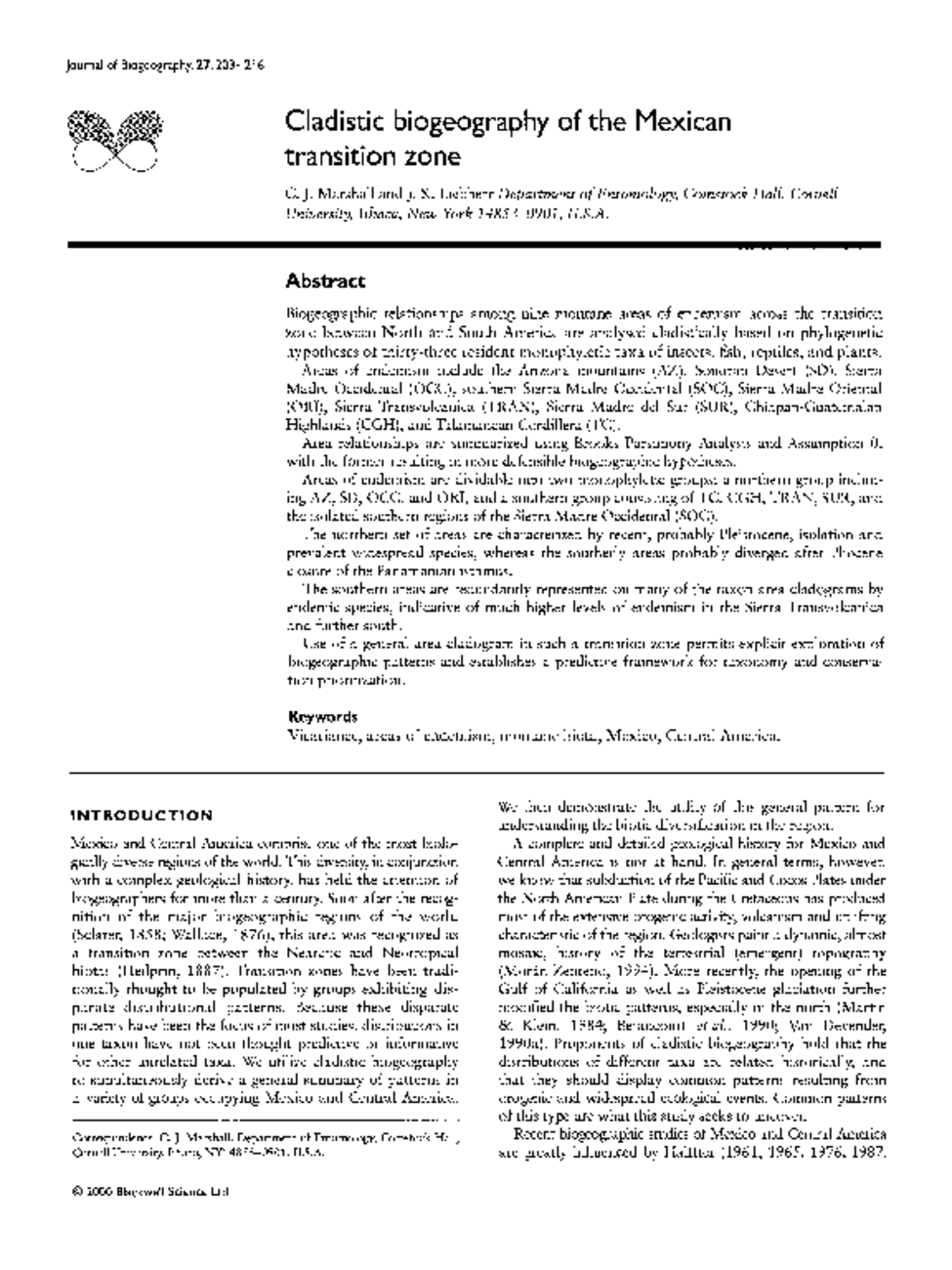Cladistic Biogeography of the Mexican Transition Zone
Marshall, C. J. and J. K. Liebherr. 1976. Cladistic Biogeography of the Mexican Transition Zone. Journal of Biogeography 27(1): 203-216.
Biogeographic relationships among nine montane areas of endemism across the transition zone between North and South America are analysed cladistically based on phylogenetic hypotheses of thirty-three resident monophyletic taxa of insects, fish, reptiles, and plants.
Areas of endemism include the Arizona mountains (AZ), Sonoran Desert (SD), Sierra Madre Occidental (OCC), southern SierraMadre Occidental (SOC), SierraMadre Oriental (ORI), Sierra Transvolcanica (TRAN), Sierra Madre del Sur (SUR), Chiapan-Guatemalan Highlands (CGH), and Talamancan Cordillera (TC).
Area relationships are summarized using Brooks Parsimony Analysis and Assumption 0, with the former resulting in more defensible biogeographic hypotheses.
Areas of endemism are dividable into two monophyletic groups; a northern group includ- ing AZ, SD, OCC, and ORI, and a southern group consisting of TC, CGH, TRAN, SUR, and the isolated southern regions of the SierraMadre Occidental (SOC).
The northern set of areas are characterized by recent, probably Pleistocene, isolation and prevalent widespread species, whereas the southerly areas probably diverged after Pliocene closure of the Panamanian isthmus.
The southern areas are redundantly represented on many of the taxon-area cladograms by endemic species, indicative of much higher levels of endemism in the Sierra Transvolcanica and further south.
Use of a general area cladogram in such a transition zone permits explicit exploration of biogeographic patterns and establishes a predictive framework for taxonomy and conserva- tion prioritization.

